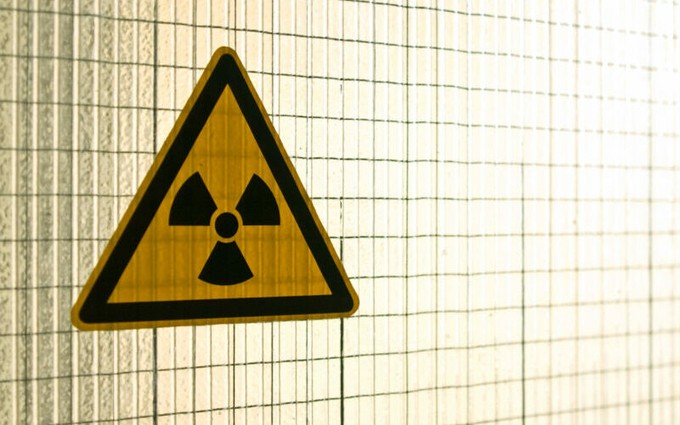A New ‘Nuclear Era’– The Same Negligent Spending
By
Guest Blogger
Posted:
|
Military & Security

Photo courtesy of Cornelius Bartke
By Aspen Coriz-Romero
It is the country’s most expensive and complex nuclear weapons program since the Cold War.
The vision of total nuclear modernization was a long-term effort originally geared up during Obama’s presidency, but rolled into full financial motion when it was made a top military priority under the Trump administration. A sweeping plan, projected to cost $1.7 trillion over 30 years, to rededicate the 21st century to nuclear weapons via the nuclear “triad”: submarine-launched ballistic missiles, long-range heavy bombing aircraft, and intercontinental ballistic missiles.
One part of this plan involves the creation of new plutonium pits: like a peach pit, except it sits at the heart of every nuclear weapon, ready to start detonation. The U.S. has not produced pits in large quantities since 1989, when the Rocky Flats Plant was closed due to illegal practices like dumping radioactive waste.
In 2018, the U.S. government designated new plutonium pit production to take place at two separate facilities, the Los Alamos National Laboratory (LANL) in New Mexico, and the Savannah River Site (SRS) in South Carolina. The sites were intended to produce no fewer than 80 pits per year by 2030– but that expectation is far from reality.
This isn’t necessary– or safe. The current plutonium pit stockpile is well over 10,000 pits in a facility in west Texas that are between 40-50 years old, and the government’s own assessment concluded that a pit has a minimum lifetime of at least 150 years. More importantly, new pit production signals to the world a commitment by the United States to retain the option of nuclear war through the current century and possibly beyond, making disarmament or even new nuclear treaties that much harder to imagine.
And there’s the money. Like so many U.S. military programs, the plutonium pit program is already showing signs of delay and running over budget. This is not new for the NNSA– assessments of the agency have found issues of mismanagement, poor oversight, and haphazard spending on big projects (and even minor ones).
Savannah River Site itself already has a history of cost overruns and delayed production. A mixed oxide (MOX) fuel fabrication facility that could convert weapons-grade plutonium into nuclear reactor fuel broke ground in 2007. The project was anticipated to be completed in 2016 at a cost of $4.8 billion, but in 2016 the DOE determined the facility would not be completed until 2048, at a cost of $17.17 billion– a price nearly three times more than originally estimated and over 30 years late.
The MOX facility also represents a history of successful resistance at Savannah River Site. In 2018, local group Savannah River Site Watch celebrated the end of the half-baked project with $8 billion already spent.
The plutonium pit program may be on a similar path. A report from the Congressional Budget Office projected the pit production program to cost $9 billion from 2019-2028, but noted the estimate was “very uncertain”. Last year, the U.S. Government Accountability Office identified at least $18 billion to $24 billion in potential costs. The former production start year 2030 is already delayed until 2036.
The effort to produce plutonium pits is racking up to be a costly endeavor, straining an already military-heavy federal budget– for something we don’t need or want.
The country is backsliding into another arms race as the Biden administration continues to fast-track spending in the wrong direction. The end of MOX fuel production at Savannah River Site shows the way forward: through dedicated advocacy and local resistance. Only then will we see those billions of dollars invested in the livelihood of hard working Americans.
VICTORY!
UPDATE Oct. 24, 2024
Cheers for a new victory in protecting public safety and taxpayer money through the collaborative efforts of the South Carolina Environmental Law Project, Savannah River Site Watch, Nuclear Watch New Mexico, Tri-Valley Communities Against a Radioactive Environment (CAREs), and the Gullah/Geechee Sea Island Coalition. The group of organizations filed legal action against the NNSA pit production plan -- and on September 30, 2024 a district court ruled in their favor.
The plan was found in violation of the National Environmental Policy Act (“NEPA”). The DOE/NNSA will now be required to reevaluate alternative proposals (including alternative sites) and provide a new environmental impact statement reviewing the impacts of pit production and related radioactive waste disposal. The federal agencies must also deliver transparency of those assessments via public hearings.
A statement about the court ruling was released by Savannah River Site Watch October 3, 2024.
Aspen Coriz-Romero is the New Mexico Fellow at the Institute for Policy Studies.